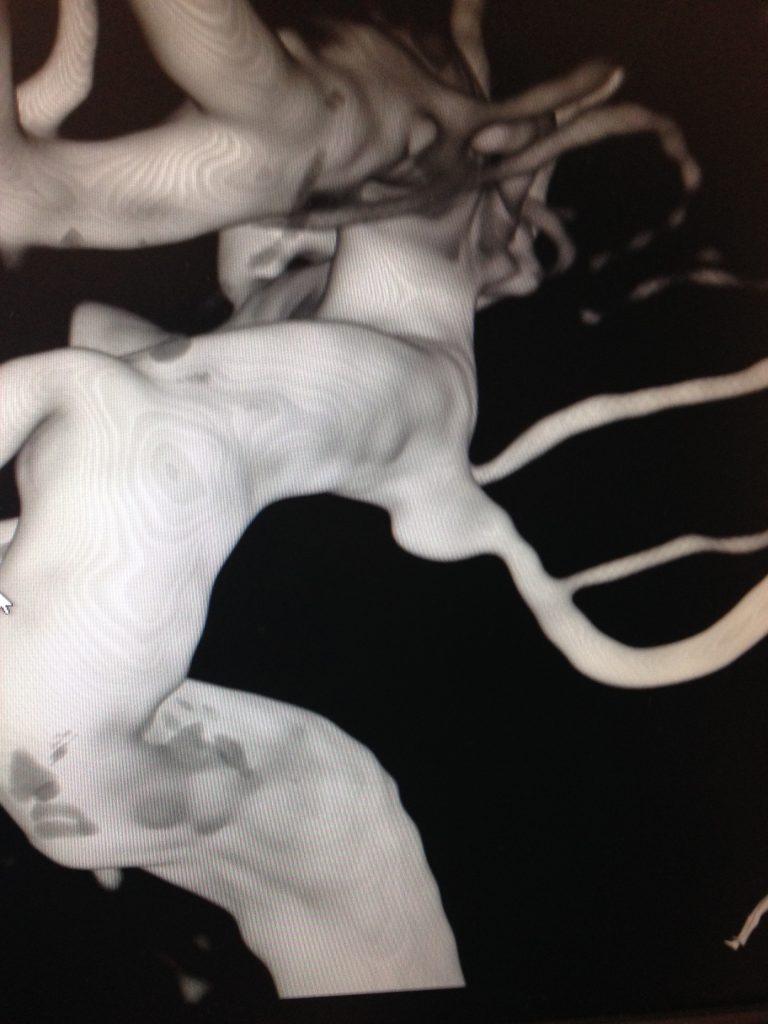This past spring, UConn Health’s neurosurgery chief Dr. Ketan Bulsara and his team were the first to perform surgery in UConn John Dempsey Hospital’s 1,200-square-foot hybrid operating room.
The hybrid operating room is a new tool for us that allows us to deliver health care in ways we have never been able to before. — Dr. Stephen Lahey
The team leveraged the new high-tech room and its dual advanced X-ray imaging capabilities, known as biplane imaging, to guide a successful minimally invasive neurological procedure.
The system features two advanced x-ray detectors – called flat-panel detectors – that provide high-resolution 3D images without the distortion common with conventional x-ray techniques.
“There are not many biplane hybrid operating rooms in the United States, and there are only a handful along the East Coast,” says Bulsara. “The biplane imaging provides surgeons multiple views, and not only makes patient care safer but also allows surgeons to do things that we could not ordinarily do inside the operating room.”

The hybrid room gives surgeons the ability to perform a range of procedures in one setting, from minimally invasive treatments to the most complex neurosurgery, interventional cardiology, and vascular procedures.
“The hybrid operating room allows surgeons to choose what they feel is the best treatment for that patient,” says Bulsara.
The hybrid room enables UConn Health to continue providing world-class care to its patients, he adds, while shaping the future of surgery and medicine and optimizing the personalized care given to each individual patient.
UConn Health’s Dr. Stephen Lahey, chief of the Department of Cardiothoracic Surgery, agrees.
“The hybrid operating room enables us to deliver health care in ways we have never been able to before,” says Lahey. “We now have all the advanced radiological equipment inside a huge operating room.”
All the high-tech equipment in the hybrid OR hangs from the ceiling, including imaging equipment, large plasma screens, and LED boom lights that assist surgeons with brighter and sharper lighting of the surgical field. A high-resolution video system provides real-time video and photo imaging during surgery for direct communication with the Department of Pathology, or teleconferencing and live broadcasts of surgery for physician training and medical education.
This article was previously published in UConn Health Journal.


